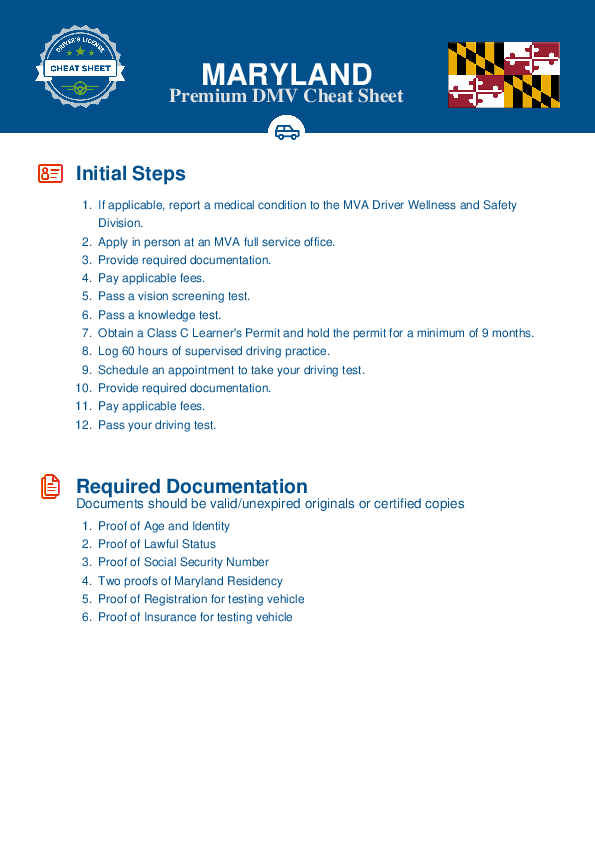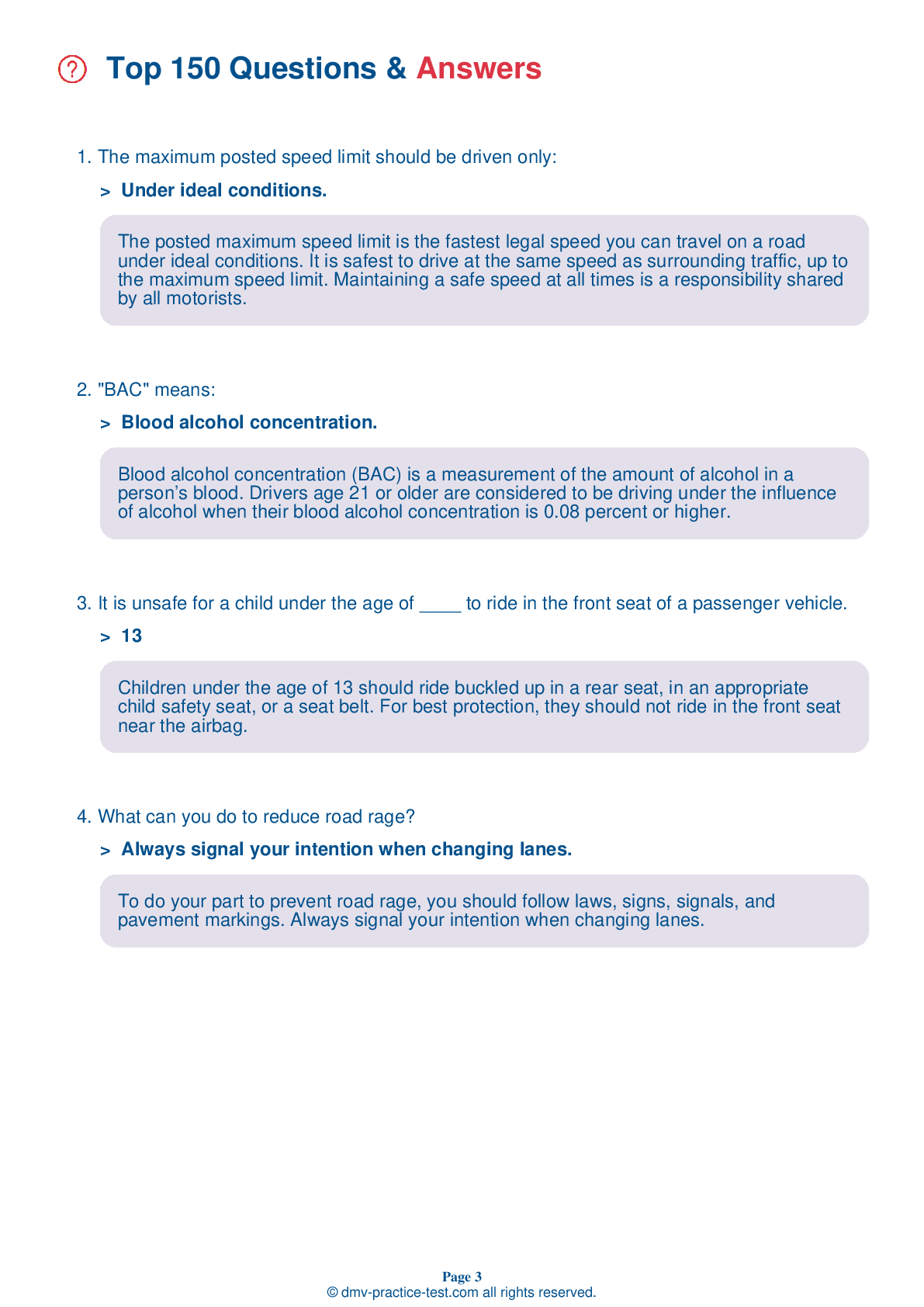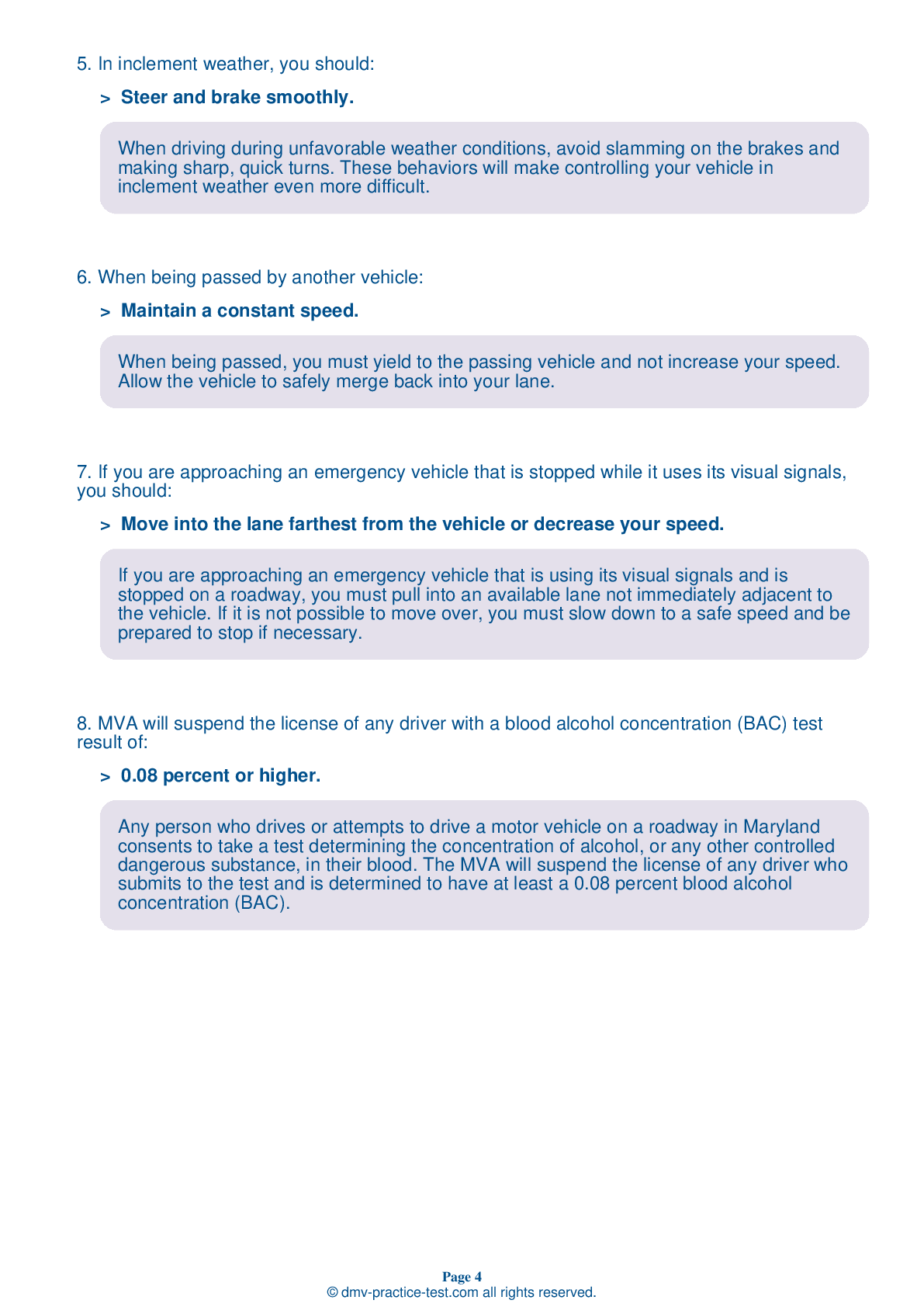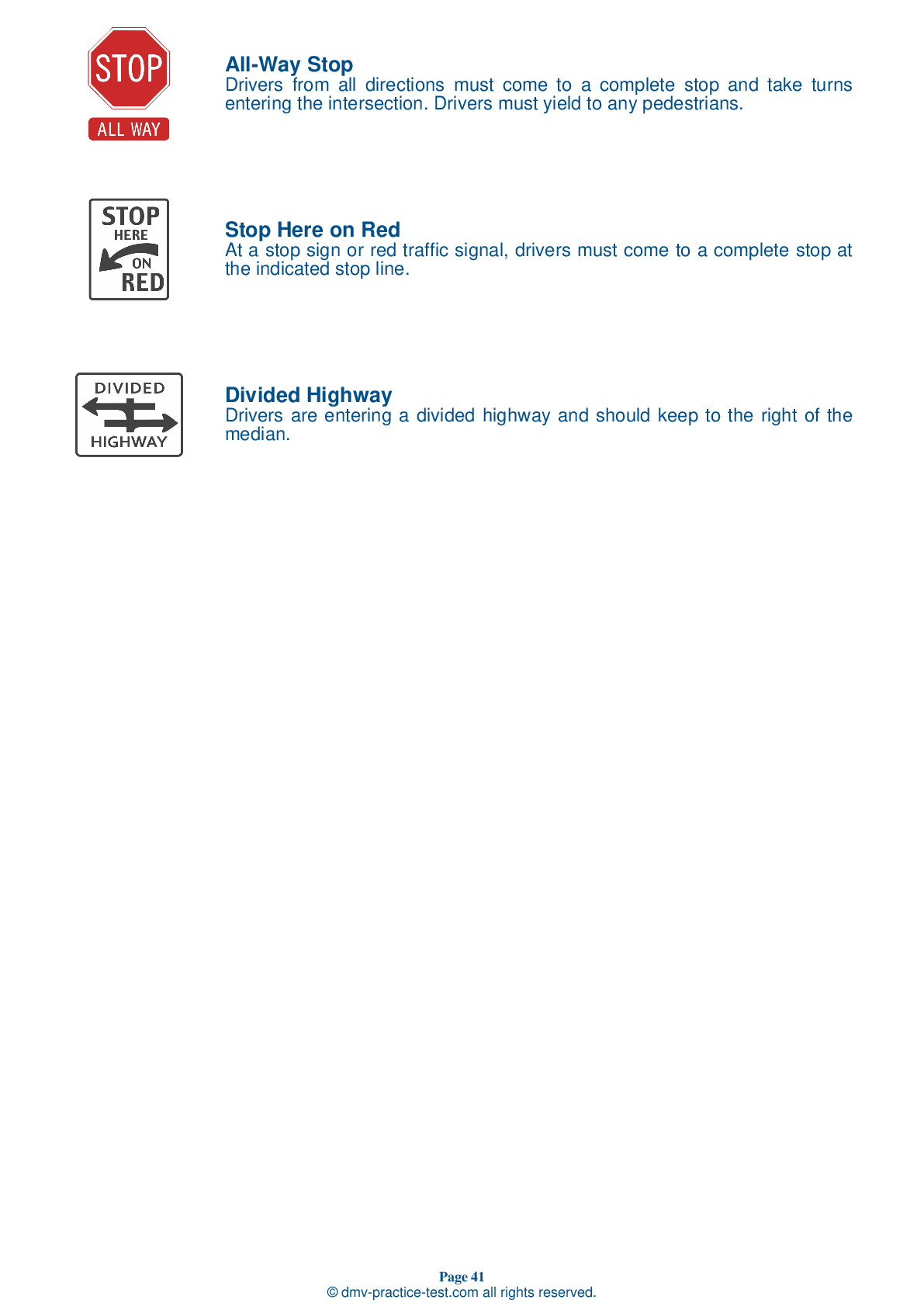FREE Maryland DMV Practice Test #1 Page 2 of 3
Maryland DMV practise examinations have been updated for January 2025. It includes questions based on the Maryland Driver Handbook's most essential traffic signals and regulations for 2025. Use actual questions that are very similar (often identical!) to the DMV driving permit test and driver's licence exam to study for the DMV driving permit test and driver's licence exam.
On the practise exam, each question gets a tip and explanation to help you remember the concepts. The written component of the official Maryland DMV test will include questions about traffic rules, traffic signs, and driving statutes, as well as knowledge from the Driver Handbook.
To obtain a passing grade, you must correctly answer 22 of the 25 questions. Take our DMV practise exam to help you prepare for your Maryland instruction permit or driver's licence.
The DMV exam is available in several languages.
Using any kind of testing assistance will result in an automatic fail, and the DMV may take additional action against your driver's licence, so stay away from it.
9 . "No zones" are areas around trucks where cars:
"No zones" are areas around trucks or buses in which cars disappear into the larger vehicle's blind spots. "No zones" can also be defined as areas in which cars are so close to the larger vehicle that they restrict the truck or bus driver’s ability to stop and maneuver safely. A car being in a "No zone" greatly increases the potential for a crash.
10 . When a car with bright headlights drives toward you at night, you should:
To avoid being blinded when driving at night, do not look directly at the headlights of oncoming cars. Instead, look toward the right edge of the road until the oncoming driver has passed.
11 . Children on bicycles should be given extra space by motor vehicle operators because:
Children are often the least predictable pedestrians and the most difficult pedestrians to see. Take extra care to look out for children, especially near schools, bus stops, playgrounds, parks, and ice cream trucks. Be aware of children riding bikes on the sidewalk, as they may come onto the road unexpectedly.
12 . If another driver is ____, they are exhibiting a potential sign of road rage.
Some signs that a driver near you is driving aggressively are that they are tailgating, speeding, changing lanes erratically, and/or failing to follow signs and signals. If you encounter an aggressive driver, the best thing to do is to get out of their path.
13 . Prior to entering a curve:
You may drive more slowly than the posted speed limit, based on road conditions, but it is illegal to drive any faster than the posted speed limit. Some conditions which require reduced speed for safety include approaching curves or hills where visibility is limited, driving on slippery roads, and driving on roads where animals and pedestrians are present.
14 . Just like alcohol and other drugs, drowsiness can:
Not getting enough sleep is a cause of poor driving behavior. Just like drugs and alcohol, sleepiness slows reaction time, decreases awareness, and impairs judgment.
15 . If you are approaching an emergency vehicle that is stopped while it uses its visual signals, you should:
If you are approaching an emergency vehicle that is using its visual signals and is stopped on a roadway, you must pull into an available lane not immediately adjacent to the vehicle. If it is not possible to move over, you must slow down to a safe speed and be prepared to stop if necessary.
16 . Highway pavement will be particularly treacherous and most slippery:
Pavement is particularly treacherous when it first begins to rain. Accumulations of dirt and oil mix with the rainwater, creating a greasy film on the roadway.
See the exact questions that will be on the 2025 Maryland DMV exam.
99.2% of people who use the cheat sheet pass the FIRST TIME
LT gives us an insight on how the cheat sheet provided her with all the study questions she needed before taking her test.
Joe initially studied with the handbook and failed his test, he eventually found us online, studied and pass his test the first time around.
2025 Maryland | Frequently Asked Questions
1. Be at least 15 years and 9 months old.
2. Pass the vision exam.
3. Complete the Maryland MVA Online Driver Test Tutorial.
4. Pass the knowledge test.
5. Provide proof of identity, age, and Maryland residency.
6. Have a parent or guardian co-sign your application.
7. Pay the required fee.
Remember, you must hold your learner's permit for nine months before you can take the driving test.



